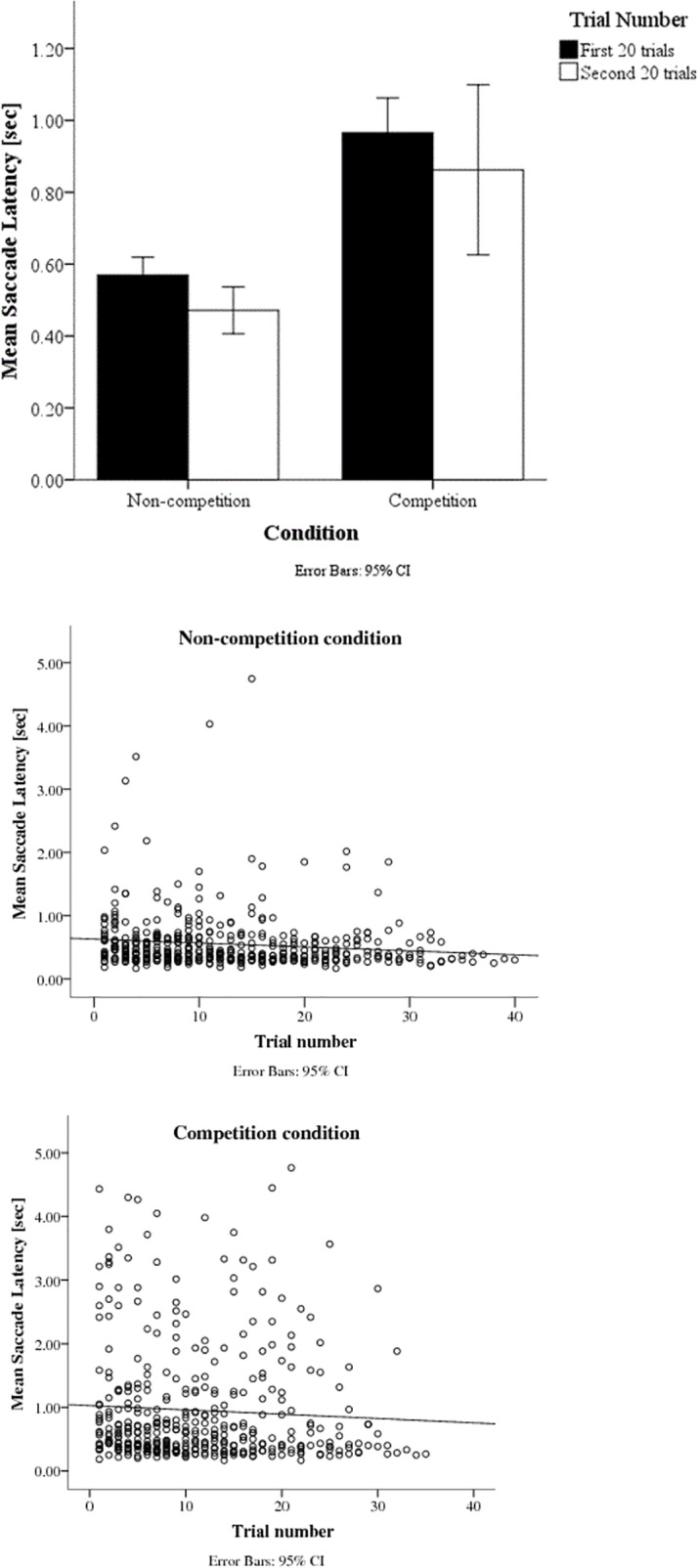Fig 3. a. Saccade latency in the first 20 trials and the second 20 trials separately for each condition. Saccade latencies are generally shorter in the second 20 trials. Competition latencies show higher variance which may be the reasons for the absence of a significant effect of trial number in this condition. b. Scatter plot of individual infants’ latencies as a function of trial number in the non-competition condition. The slope is significantly negative (p = .011). The reduction in very long latencies across trials may be the major contributor to the learning effect. c. Scatter plot of individual infants’ latencies as a function of trial number in the competition condition.

The slope did not significantly differ from zero (p = .929), suggesting that there is no learning effect under competition
